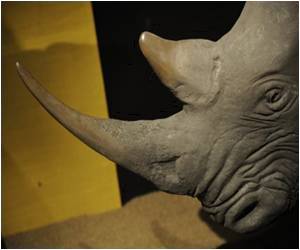
At the time, although researchers were working with stem cells from embryos, scientists had not yet developed techniques for reliably inducing normal adult cells to become stem cells.
But the technology arrived soon after, and scientists now accomplish this feat, called induced pluripotency, by inserting genes in normal cells that spark the transformation.
While professor of developmental neurobiology at Scripps Research Jeanne Loring's team met with Ryder in early 2008, they realized that these newly emerging techniques might be applied to endangered species.
Loring and her colleagues at the Scripps Research Institute then created stemcells from frozen skin cells of two such endangered species - the drill and the northern white rhinoceros.
"The best way to manage extinctions is to preserve species and their habitats, but that's not working all the time," said Oliver Ryder, director of genetics at the San Diego Zoo and co-leader of the study.
Advertisement
"Stem cell technology provides some level of hope that they won't have to become extinct even though they've been completely eliminated from their habitats. I think that if humankind wants to save this species, we're going to have to develop new methodologies," he added.
Advertisement
Source-ANI












